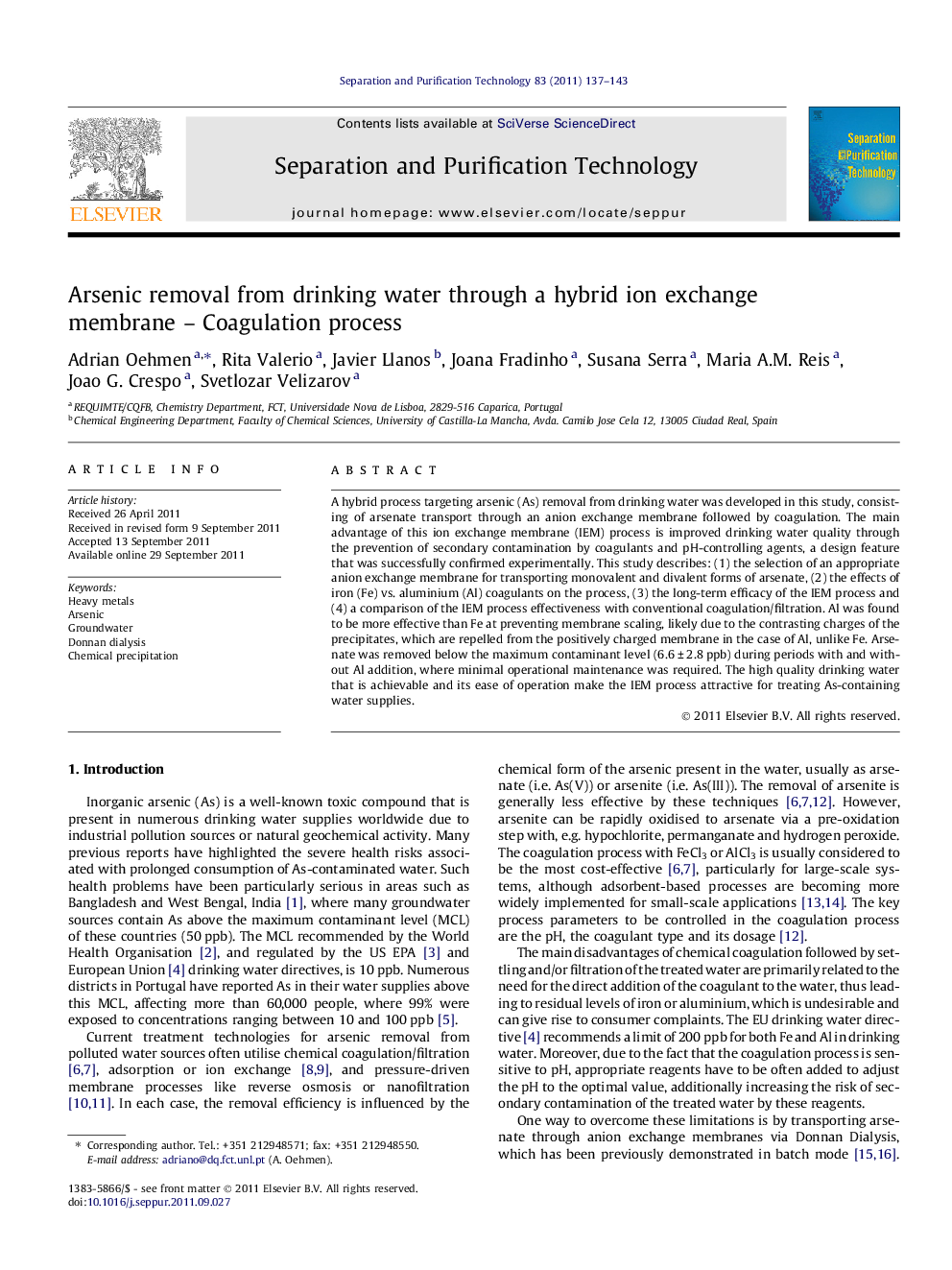| کد مقاله | کد نشریه | سال انتشار | مقاله انگلیسی | نسخه تمام متن |
|---|---|---|---|---|
| 642466 | 1457036 | 2011 | 7 صفحه PDF | دانلود رایگان |

A hybrid process targeting arsenic (As) removal from drinking water was developed in this study, consisting of arsenate transport through an anion exchange membrane followed by coagulation. The main advantage of this ion exchange membrane (IEM) process is improved drinking water quality through the prevention of secondary contamination by coagulants and pH-controlling agents, a design feature that was successfully confirmed experimentally. This study describes: (1) the selection of an appropriate anion exchange membrane for transporting monovalent and divalent forms of arsenate, (2) the effects of iron (Fe) vs. aluminium (Al) coagulants on the process, (3) the long-term efficacy of the IEM process and (4) a comparison of the IEM process effectiveness with conventional coagulation/filtration. Al was found to be more effective than Fe at preventing membrane scaling, likely due to the contrasting charges of the precipitates, which are repelled from the positively charged membrane in the case of Al, unlike Fe. Arsenate was removed below the maximum contaminant level (6.6 ± 2.8 ppb) during periods with and without Al addition, where minimal operational maintenance was required. The high quality drinking water that is achievable and its ease of operation make the IEM process attractive for treating As-containing water supplies.
Arsenate is transported through an anion exchange membrane at the expense of chloride, then precipitates with a coagulant (e.g. aluminium), ensuring maximum As flux and minimal environmental impact of the brine solution.Figure optionsDownload as PowerPoint slideHighlights
► An ion exchange membrane – coagulation process was developed for As removal
► Arsenic removal achieved to levels below the drinking water limit (<10 ppb).
► Secondary contamination of the drinking water by coagulants was prevented.
► Al was a superior coagulant to Fe at minimising membrane scaling.
► The process requires minimal operational maintenance.
Journal: Separation and Purification Technology - Volume 83, 15 November 2011, Pages 137–143